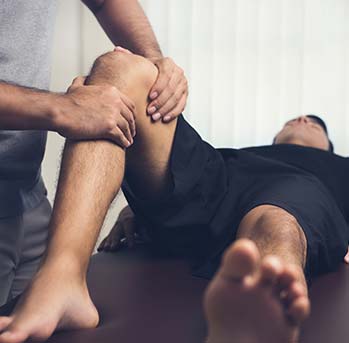Managing Whiplash with Exercise and Manual Therapy
Posted On: April 27, 2020
Whiplash is an enigma. Many individuals don’t even believe it exists. This attitude has been fostered by insurance carriers who are often loath to pay claims for such an injury. I can’t tell you how many times I have had an individual say to me, “I can’t believe I am having this much pain from that small of an accident, I aways thought whiplash was a farce!”
Whiplash is no farce. It has disabled or partially disabled millions of individuals. People get hurt because of physics. When a car that weighs 3000 pounds hits another 3000 pound car from behind at a low enough speed, it may not damage either car, but a lot of the force gets transferred into accelerating the car at rest. The occupant of that accelerating car gets a jolt and it is this jolt that causes injury.
Approximately 50 percent of people involved in a whiplash-type accident get hurt. Of those, 50 percent recover, leaving 25 percent with chronic symptoms.
Symptoms of whiplash can include neck pain, headaches, tingling/numbness down the arm, and lower back pain just to name a few.
Treatment has to be done in phases. There is an acute phase were relative rest and anti-inflammatory measures are needed. Intermittent manual traction may be useful. Electric stimulation for pain relief if used as a short term therapy is warranted. Maintaining good posture is key in the acute phase.
The next phase of therapy is the subacute phase. This phase includes range of motion exercise, manual therapies like mobilization/manipulation, myofascial release (a form of massage used to relieve tight musculature) and light strengthening geared at postural muscles. Posture is as important in this phase as it is in the acute phase.
The final phase of therapy includes more strengthening and integrating into more functional activities (lifting tasks, work specific tasks or sport specific activities). Passive therapies can still be employed like manipulation and myofascial release but these therapies should not dominate the program. Again, posture is the key to optimum recovery.
How long does this take? I have found in my practice three to six months on average. Some people may never fully recover and be left with annoying symptoms or even a disability.
All of this from whiplash. Typically the best medical providers to see are those trained in whiplash injuries. Chiropractors and physical therapists both can take postgraduate courses in whiplash. If you are suffering from whiplash, seek the care of a provider with advanced training in this area, to help facilitate your optimum recovery.
Stay well.
Dr. J
Our Services
our Health Tips Follow us for the latest information on
pain relief & rehabilitation

Getting Back in the Swing of Golf
You have been cooped up since last year. At fifty-five you got your vaccine for COVID-19 as soon as it was available. Now you can go back and hit the...
Continue Reading

February is Patient Appreciation Month!
February is Patient Appreciation Month at North Shore Spinal and Sports Rehabilitation!
Our special this year is buy one get one free maintenance visi...
Continue Reading

Knee Pain from Running
You have been running to stay in shape since the pandemic started. You used to work out regularly in the gym but because of the pandemic you didnR...
Continue Reading










